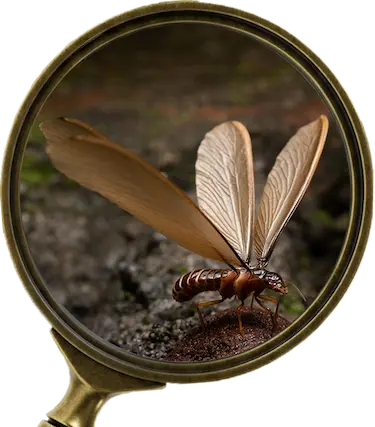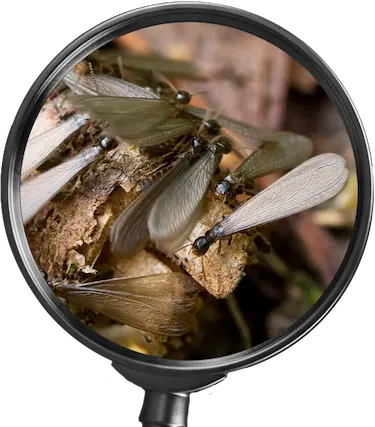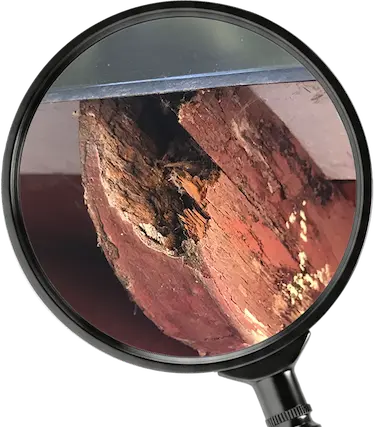Treatment Options for Wood-Destroying Organisms
Termite treatments can vary depending on the type of infestation and the condition of your home. This page is here to help you understand the different options available, what they involve, when they're needed, and what to expect during the process.
Our goal is to provide clear, honest information so you can make the right decision for your situation. We want you to feel confident, not pressured, and to avoid treatments that aren’t truly necessary. Catching the problem early also increases the chance of using a more targeted and cost-effective solution before more serious damage sets in.
Keep in mind that our termite inspections and consultations are completely free. We’ll visit your property, identify any issues, and provide a detailed report at no cost to you.
Drywood Termites
Drywood termite colonies start out growing slowly, but over time, they can become a significant problem. If you're not sure whether you're dealing with drywood termites, you can start by checking our identification guide to compare common signs. Starting with just a couple termites, colonies gradually expand to hundreds and, as they mature, can grow into the thousands. Once established, mature colonies will send out swarmers—winged termites searching for new locations to infest. If left untreated, colonies can spread over time, forming additional colonies in multiple locations, including hard-to-reach or inaccessible areas such as within wall voids or secluded parts of attics. This compounding spread can significantly increase the scope of the infestation and the difficulty of treatment.
Local Treatments (Spot Treatments)
Local treatments, also known as spot treatments, are a targeted approach to addressing termite infestations. This method involves treating only the specific areas where termite activity has been identified. The process typically includes drilling small holes into the infested wood and injecting a termite control product, such as orange oil or other chemical solutions, directly into the affected areas.

Comparison: Orange Oil vs. Other Treatments
- Orange Oil:A natural, plant-based product that can be effective for localized termite infestations. Orange oil kills termites on contact, making it a good option for spot treatments where activity has been directly observed. However, because it does not spread beyond the treated area, it may not reach termites that are hidden deeper within the wood or in inaccessible spaces.
- Other Treatments: Many synthetic termiticides, available to professionals, are non-repellent, meaning termites cannot detect them and are more likely to encounter treated areas. Unlike orange oil or over-the-counter bug sprays, these professional-grade products have a transfer effect: Termites exposed to the chemical carry it back to their colony, spreading it through grooming and interaction with others. This transfer effect allows the treatment to reach termites deep within the nest, including those that never directly encounter the treated area. Over time, as more termites are exposed and unknowingly spread the chemical, the colony weakens and eventually collapses.
Advantages of Local Treatments:
- Short Treatment Duration: Spot treatments are quick and often completed in just a few hours.
- No Need to Vacate: Unlike fumigation (tenting), homeowners can remain in the property during treatment.
- Very Targeted: By focusing only on specific infestation sites, this method reduces risks associated with other treatments, such as fumigation or heat exposure.
Consideration:
- Limited Scope: Local treatments target visible infestations, which means hidden termite activity in inaccessible areas may go untreated.
Local treatments are an excellent choice for visible infestations or when a less invasive solution is desired.
Fumigation: An Effective Whole-Structure Treatment Option for Drywood Termites
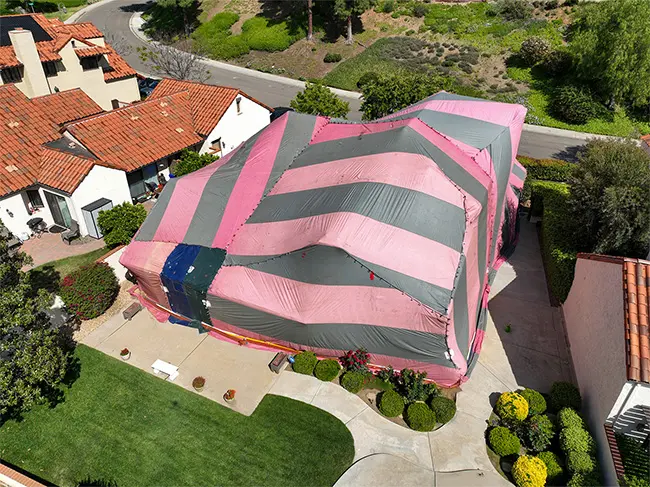
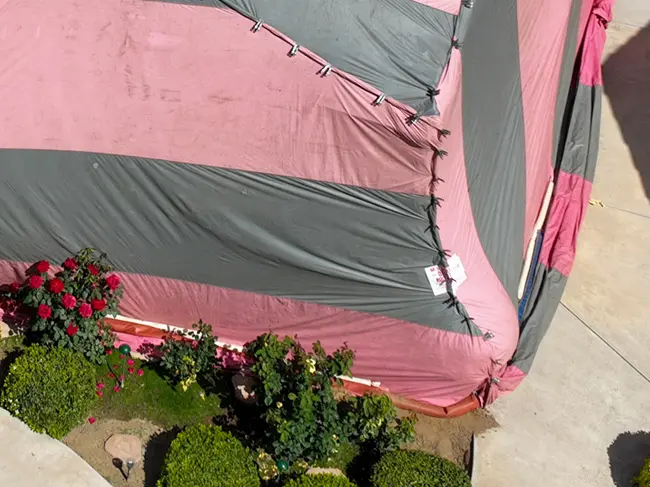
Fumigation is often the best treatment option for drywood termites. The process involves sealing the structure with a tent and introducing a gas that penetrates deep into wood and hard-to-reach areas, eradicating all the drywood termites in the structure. In Southern California's drywood termite-prone climate, most homes should be fumigated at least every ten years.
Fumigation is a highly effective method for eliminating termites, including hidden colonies that might otherwise remain undetected. However, there are several important considerations to keep in mind:
-
Entire Structure Required: Fumigation involves treating the entire structure, as tenting only a portion of a building is not an option. For condos or multi-unit buildings, this means the entire building must be vacated.
Things attached to the structure: Attached patio covers and decks will need to be included under the tarp. Fences don't generally pose a challenge, and solid walls can be sealed off effectively, as gas cannot penetrate concrete. In contrast, hollow walls connected to the house can allow gas to escape, making them more difficult to seal. To address these complexities, the tent may need to be extended to cover such features, or modifications like cutting and repairing walls or arches might be required to achieve a proper seal.
It is essential to identify and address any elements that might prevent a secure enclosure or allow gas to escape during the fumigation process.
-
Temporary Relocation: You will need to vacate your home for approximately three days while the fumigation process is underway. Planning ahead ensures a smooth transition during this time.
-
Electricity on and Gas Disconnected: Electricity needs to be on because fans are used to circulate the gas, and your utility provider must disconnect or lock your gas meter prior to fumigation. Scheduling this step in advance is crucial.
-
Food and Medication Preparation: All food items and medications must be removed from the home or sealed in special protective bags provided by your pest control company to prevent contamination.
-
Exterior Doors and Windows: Exterior doors must be able to close and lock to prevent unauthorized entry during fumigation. Additionally, at least one window in each bedroom will need to remain slightly open to allow proper circulation of the fumigant throughout the structure.
-
Plants and Trees: Plants and trees located close to the structure must be trimmed back to ensure the fumigation tarp can securely reach the ground, creating an effective seal. While the tarp can be placed around the outside of plants, those left under the tarp may sustain damage during fumigation. To minimize harm, it is recommended to thoroughly water the plants and soil just before the fumigation process begins.
-
Roof Considerations: When preparing for tenting, it’s important to consider the type of roof. Composite roofs, such as shingles, typically hold up well during the process. However, tiled roofs, particularly those with two-piece clay tiles, are at a much higher risk of sustaining damage due to their fragile design. It is a good idea to review your specific roof type with your termite inspector before scheduling the fumigation.
Not prone to breakage: Composite Shingles Composition roofing, such as shingles and roll roofing, holds up well.
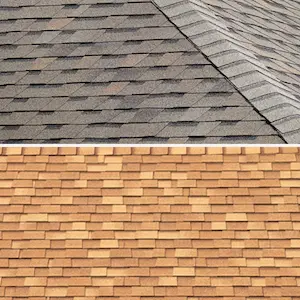
Most Fragile: Two-Piece Clay Tiles These tiles are delicate, prone to damage during fumigation, and can be costly to repair.
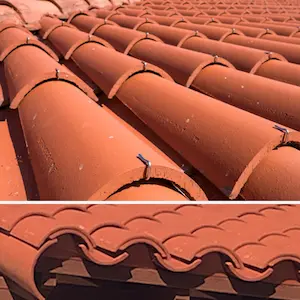
Fragile but Repairable: One-Piece Clay Tiles Not as delicate as two-piece clay tiles, but still quite susceptible to breakage.
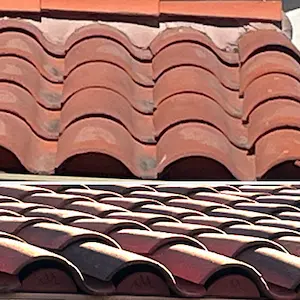
Moderately Sturdy but Not Unbreakable: Concrete Tiles Hardier than clay tiles, but not immune to breakage.
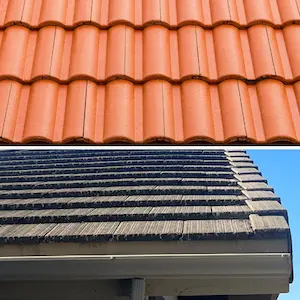
Fumigation is the most effective way to protect your home or structure from the destructive impact of drywood termites. By eliminating all termites within the structure, it offers unparalleled protection and peace of mind. Though no residual chemicals remain after the process, fumigation's effectiveness lies in addressing infestations that take years to fully develop, providing homeowners with extended protection and delaying the need for future treatments.
Heat Treatment: An Effective Whole-Area Solution
Heat treatment is a non-chemical method for combating drywood termites. This process involves enclosing the affected area and using specialized equipment to raise the temperature inside the structure. The goal is to heat the air and wood to a termite-lethal level, typically around 130°F, sustained for a specific period. This ensures the elimination of termites throughout the treated area.
Advantages of Heat Treatment:
- Complete Area Coverage: Heat treatment targets entire sections of a home, such as an attic.
- Shorter Treatment Time: The process can often be completed in a single day, allowing homeowners to return quickly.
Combining Heat Treatment and Local Treatments
For comprehensive termite management, a combination of heat treatment and local treatments can be an effective solution, especially in situations where full-structure fumigation is not feasible.
Attics are among the most commonly infested areas for drywood termites due to the abundance of dry, untreated, and unpainted wood, combined with their warm, dry conditions. These spaces provide an ideal environment for termites, which do not require soil contact and can enter through small cracks or openings in roof eaves or vents. Once inside, the colony will mature and produce swarmers that can spread into inaccessible areas of the home.
Heat treatment in the attic is a highly effective way to eliminate these colonies. It targets termites comprehensively by raising the temperature to lethal levels, addressing both visible and hidden infestations. Limiting heat treatment to the attic also minimizes the risk of heat damage to other parts of the home.
For the rest of the structure, where termite activity is more scattered, local treatments can be applied to specific infestations. This combination approach can provide efficient termite control with minimal disruption.
Subterranean Termites
Subterranean termites are among the most destructive wood-destroying pests, causing significant damage to homes and structures. These pests thrive in moist environments, often facilitated by poor drainage, leaking pipes, or raised foundation areas where water accumulates, and they rely on the soil to maintain their moisture needs and support their colonies. Additionally, subterranean termites can contribute to dryrot, further weakening wood structures.
Their underground colonies and intricate tunnel systems enable them to access critical structural members, such as floor joists and support beams in raised foundations. Colonies of the Western subterranean termite, found in Southern California, can reach populations of hundreds of thousands, amplifying their destructive potential.
Treatment Options
Addressing subterranean termites requires treating the soil, which may involve drilling through concrete to access and treat the underlying colonies. Unlike drywood termite treatments, soil treatments can provide ongoing protection, acting as a barrier for up to 8 to 10 years depending on the method and product used. The primary decision is whether to choose a focused spot treatment or a more extensive approach, treating all the soil around the structure.
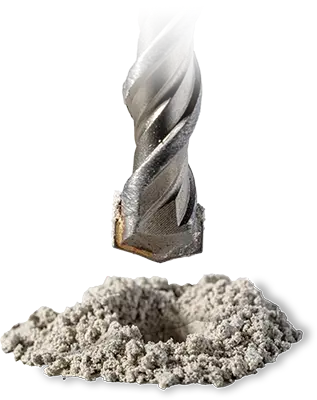
Spot Treatment
Spot treatment for subterranean termites focuses on treating specific areas of the soil where infestations are detected. This method is less invasive and more cost-effective than full-structure treatments. However, it only addresses localized problems and does not provide comprehensive protection for other areas of your home or prevent future infestations in untreated soil.
Full-Structure Treatment
As the name implies, full-structure treatment involves treating all vulnerable areas around the entire structure. This approach provides comprehensive protection by eradicating current infestations and establishing a barrier to prevent future ones. It can also be utilized as a preventative measure, safeguarding your home for many years to come.
Each situation is unique, and the decision between spot treatment and full-structure treatment depends largely on the extent of the infestation and the homeowner’s priorities.
DryRot
Dry rot is a type of wood decay caused by fungi that thrive in damp or moist conditions. It is a significant issue in areas where water intrusion or prolonged exposure to moisture occurs. Damp wood creates an ideal environment for fungal spores to germinate and grow. The fungi consume lignin and cellulose, leading to significant weakening and eventual failure of wooden components.
Treatment Options
- Stop the Source of Moisture
Where possible, the first step in addressing dry rot is eliminating the source of moisture. When it comes to dryrot behind weatherproofing or inside a house, this often involves repairing leaks.
- Treat and Replace or Patch the Affected Area
Borate products are a good treatment option along with replacement or in some cases patching:
- Replace Wood: Severely damaged wood that has lost most of its strength or stability should be completely replaced.
- Patch Wood: Polyurethane and epoxy products can provide strong, lasting repairs when wood is properly prepared and treated. Patching can be an excellent solution, but its success depends heavily on careful preparation, which is often overlooked. Without the right steps to stabilize and condition the wood beforehand, patches are much more likely to fail. When done correctly, patching can offer a durable and effective result.
Choosing between replacement and patching depends on factors such as the extent of the damage, location, and the role of the wood in the overall structure.
Frequently Asked Questions
Jump to a question:
- Is there a natural or non-toxic termite treatment?
- Can I stay home during termite treatment?
- How long does a local termite treatment take?
- How soon after a termite treatment is it safe to be home?
- Do I need to prepare my home for a termite treatment?
- Are termite treatments safe for kids and pets?
- What is the most effective termite treatment?
- How often should I tent my house for termites?
- Is heat treatment better than fumigation?
- How long does termite treatment last?
- Can termites be treated without fumigation?
- What’s the best way to treat dry rot?
Is there a natural or non-toxic termite treatment?
Yes, there are natural and low-toxicity options for termite treatment. Options like orange oil, borate-based products, and heat treatments offer alternatives to traditional chemical methods. Orange oil kills termites on contact but works best for localized infestations. Borate treatments penetrate wood to help prevent termite damage over time. Heat treatment eliminates termites without using pesticides. These methods can be effective in certain situations, but a professional inspection is the best way to determine the right solution for your home.
Can I stay home during termite treatment?
In many cases, yes. For local treatments, such as spot applications or heat treatments in areas like the attic, you can stay in your home during the service. With most types of treatment, there’s no need to leave. Fumigation (tenting) is the main exception, and that requires the property to be completely vacated for a few days.
How long does a local termite treatment take?
Most local termite treatments can be completed in a few hours, depending on the size of the infestation and the number of areas that need to be treated. Heat treatments typically take several hours. In contrast, fumigations require you to vacate the property for about three days to allow the fumigant to work and the house to be properly aired out before re-entry.
How soon after a termite treatment is it safe to be home?
For most local treatments, it is safe to remain home during and after the service. If a chemical product is used, your inspector may recommend allowing a short drying period, usually one to two hours, before pets and children can reenter the treated area. Heat treatments allow immediate re-entry once the service is complete. For fumigations, the house is aerated before the tent is taken down. The fumigation crew will confirm that it is safe to return, and a notice of re-entry will be posted. Once the tent is removed and the notice is in place, it is safe to go back inside.
Do I need to prepare my home for a termite treatment?
Usually very little preparation is needed for local and heat treatments. It’s helpful to clear access to the areas being treated by moving furniture, storage boxes, or other items that may block walls, floors, or attic access points. Preparing for fumigation is more involved and includes bagging food and medications in special bags provided by the termite company, ensuring that plants and trees are trimmed back to avoid blocking the fumigation tarp, and removing all pets from the property.
Are termite treatments safe for kids and pets?
Yes, when applied professionally, termite treatments are safe for children and pets. The products used are designed to have low toxicity once dry and are applied according to strict safety guidelines. For extra peace of mind, you can discuss any specific concerns with your inspector before the treatment begins.
What is the most effective termite treatment?
Fumigation is considered the most effective whole-structure treatment for drywood termites. It eliminates termites throughout the building, including hidden areas.
How often should I tent my house for termites?
In most cases, a properly performed fumigation will eliminate all active drywood termite colonies in the structure. Because it can take several years for a new infestation to spread into inaccessible areas and grow large enough to require fumigation again, many homes in Southern California only need tenting once every 8 to 10 years, sometimes even longer.
That said, the frequency can vary depending on factors like the age of the home, surrounding vegetation, and whether ongoing maintenance or localized treatments are performed between fumigations. Regular inspections can help catch early signs of activity and reduce the need for full-structure tenting in the future.
Is heat treatment better than fumigation?
Heat treatment is faster and chemical-free but typically less thorough than fumigation. It's ideal for localized areas like attics.
How long does termite treatment last?
Soil treatments for subterranean termites can last 8 to 10 years when applied properly, thanks to long-lasting residual effects in the soil. In contrast, fumigation for drywood termites is a one-time treatment that doesn’t leave behind any residual chemical. While this means it won’t prevent future infestations, it also means there are no lingering toxins in the home once the structure is properly aerated.
Can termites be treated without fumigation?
Yes, termites can be treated without tenting by using local or spot treatments. These methods are less invasive and can be effective, but they may not reach hidden colonies in inaccessible areas.
What’s the best way to treat dry rot?
The first step is to eliminate the source of moisture whenever possible. After that, the affected wood should be treated with a borate product to stop further fungal growth. Depending on the extent of the damage, the wood can either be replaced or patched. If patching is chosen, properly preparing the wood is crucial. You can't just patch over dryrot damage.
Protecting your property from termites and dryrot is an ongoing commitment. By understanding the treatment options available and recognizing early signs of infestation, you can take proactive steps to safeguard your home. If you require expert guidance or wish to schedule an inspection, we're ready to assist you .
